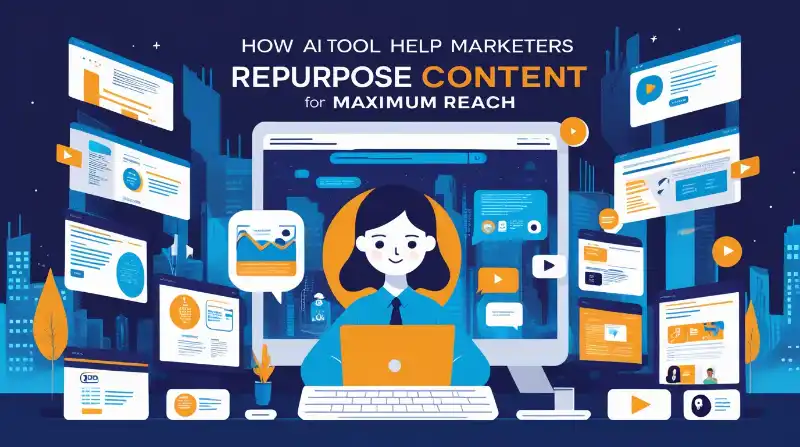Crafting a Winning Go-to-Market Strategy for Cybersecurity SaaS Products: A Comprehensive Guide
In the rapidly evolving landscape of cybersecurity, bringing a new SaaS product to market requires more than just innovative technology—it demands a well-crafted Go-to-Market (GTM) strategy. This comprehensive guide will walk you through the process of defining, creating, and executing a GTM strategy specifically tailored for cybersecurity SaaS products. By understanding the unique challenges and opportunities in this space, you can position your product for success in a competitive and critical industry.
I. Understanding the Cybersecurity SaaS Landscape
Before diving into strategy creation, it's crucial to understand the current state of the cybersecurity SaaS market.
Market Overview
- The global cybersecurity market is projected to grow from $155.83 billion in 2022 to $376.32 billion by 2029, with a CAGR of 13.4% (Fortune Business Insights, 2022).
- SaaS solutions are increasingly preferred due to their scalability, ease of implementation, and reduced upfront costs.
Key Trends
- Zero Trust Architecture: Rising adoption of zero trust security models.
- AI and Machine Learning: Increasing use of AI for threat detection and response.
- Cloud Security: Growing demand for cloud-native security solutions.
- Compliance and Regulations: Evolving regulatory landscape (e.g., GDPR, CCPA) driving security investments.
- Remote Work Security: Persistent focus on securing distributed workforces.
II. Defining Your Go-to-Market Strategy
A well-defined GTM strategy is your roadmap to successfully launching and growing your cybersecurity SaaS product.
1. Identify Your Target Market
- Market Segmentation: Divide the market based on:
- Company size (SMB, Mid-market, Enterprise)
- Industry verticals (e.g., Finance, Healthcare, Government)
- Geographic regions
- Specific security needs (e.g., endpoint security, network security, cloud security)
- Ideal Customer Profile (ICP): Define your ICP based on:
- Company characteristics (size, industry, tech stack)
- Pain points and challenges
- Budget and decision-making process
- Buyer Personas: Create detailed profiles of key decision-makers, such as:
- Chief Information Security Officer (CISO)
- IT Director
- Compliance Officer
- CEO/CFO (for SMBs)
2. Define Your Unique Value Proposition (UVP)
- Clearly articulate how your product solves specific cybersecurity challenges.
- Differentiate your offering from competitors.
- Align your UVP with the pain points of your target market.
3. Determine Your Pricing Strategy
- Consider models such as:
- Per-user pricing
- Tiered pricing based on features
- Usage-based pricing
- Custom enterprise pricing
- Factor in the Total Cost of Ownership (TCO) for customers.
- Analyze competitor pricing and market expectations.
4. Choose Your Sales Channels
- Direct sales team for enterprise clients
- Inside sales for SMB and mid-market
- Channel partners and resellers
- Marketplaces (e.g., AWS Marketplace, Azure Marketplace)
- Self-service options for smaller clients or trials
5. Develop Your Messaging and Positioning
- Create a clear, compelling narrative around your product.
- Tailor messaging to different buyer personas and use cases.
- Focus on outcomes and business impact, not just features.
III. Creating Your Go-to-Market Plan
With your strategy defined, it's time to create a detailed plan for execution.
1. Set Clear Objectives and KPIs
- Define specific, measurable goals for your launch and beyond.
- Examples of KPIs:
- Customer Acquisition Cost (CAC)
- Monthly Recurring Revenue (MRR)
- Churn rate
- Time to value for customers
- Net Promoter Score (NPS)
2. Develop a Content Marketing Strategy
- Create thought leadership content (whitepapers, research reports)
- Develop educational resources (blogs, webinars, how-to guides)
- Produce case studies and success stories
- Leverage industry-specific content to demonstrate expertise
3. Plan Your Demand Generation Activities
- Implement SEO strategies focusing on cybersecurity keywords
- Utilize paid search and display advertising
- Engage in social media marketing, particularly on LinkedIn
- Participate in or host industry events and webinars
- Implement email marketing campaigns
4. Build Strategic Partnerships
- Identify potential technology partners for integrations
- Explore co-marketing opportunities with complementary vendors
- Engage with industry analysts and research firms
5. Prepare Your Sales Enablement Materials
- Create comprehensive product documentation
- Develop sales scripts and battle cards
- Design demo environments and proof-of-concept processes
- Prepare ROI calculators and value proposition materials
6. Establish Customer Success Processes
- Define onboarding procedures
- Create training materials and knowledge bases
- Implement customer feedback loops
- Develop upsell and cross-sell strategies
IV. Executing Your Go-to-Market Strategy
Successful execution of your GTM strategy requires careful coordination and continuous optimization.
1. Launch Phases
Consider a phased approach to your launch:
- Soft Launch: Limited release to a select group of customers or beta testers.
- Full Launch: Wider release with full marketing and sales efforts.
- Expansion: Scaling efforts based on initial success and feedback.
2. Align Your Team
- Ensure all departments (Sales, Marketing, Product, Customer Success) are aligned on the GTM strategy.
- Conduct regular cross-functional meetings to maintain alignment and share insights.
3. Leverage Marketing Automation
- Implement marketing automation tools for lead nurturing and scoring.
- Use CRM systems to track customer interactions and sales pipeline.
4. Focus on Customer Acquisition and Onboarding
- Streamline the sales process to reduce friction.
- Develop a smooth onboarding process to ensure customer success.
- Implement early warning systems to identify and address potential churn risks.
5. Gather and Act on Feedback
- Regularly collect feedback from customers, partners, and internal teams.
- Use feedback to iterate on your product and GTM strategy.
6. Monitor and Optimize Performance
- Regularly review KPIs and adjust strategies as needed.
- A/B test different messaging, pricing models, and sales approaches.
- Stay agile and be prepared to pivot based on market response.
V. Unique Considerations for Cybersecurity SaaS
1. Build Trust and Credibility
- Obtain relevant security certifications (e.g., SOC 2, ISO 27001)
- Be transparent about your own security practices
- Engage with the cybersecurity community through contributions to open-source projects or participation in industry forums
2. Navigate Compliance and Regulations
- Ensure your product helps customers meet relevant compliance requirements
- Stay informed about emerging regulations and adapt your product accordingly
- Provide clear documentation on how your product addresses compliance needs
3. Address the Skills Gap
- Design your product with ease of use in mind to address the cybersecurity skills shortage
- Offer robust training and educational resources
- Consider offering managed services or expert support options
4. Demonstrate Real-World Efficacy
- Develop a strong proof-of-concept process
- Offer free trials or freemium versions to demonstrate value
- Regularly publish threat research or incident response case studies to showcase your expertise
5. Stay Ahead of Evolving Threats
- Implement a rapid response process for emerging threats
- Regularly update your product to address new vulnerabilities and attack vectors
- Communicate proactively with customers about threat landscape changes
Conclusion
Crafting and executing a Go-to-Market strategy for a cybersecurity SaaS product is a complex but crucial process. By thoroughly understanding your market, clearly defining your strategy, creating a detailed plan, and executing with precision, you can position your product for success in this critical and fast-paced industry. Remember that your GTM strategy should be a living document, continuously evolving based on market feedback, technological advancements, and shifts in the threat landscape. Stay agile, keep your finger on the pulse of the industry, and always prioritize the security and success of your customers. By following this comprehensive guide, you'll be well-equipped to navigate the challenges and seize the opportunities in the cybersecurity SaaS market. Your innovative product, combined with a well-executed GTM strategy, has the potential to make a significant impact in safeguarding organizations against the ever-evolving cyber threats of today and tomorrow.





